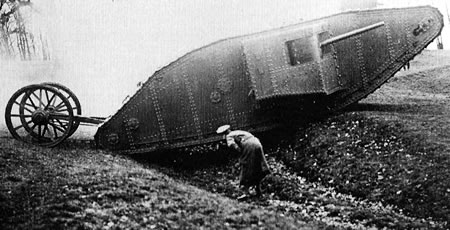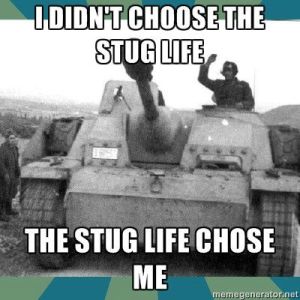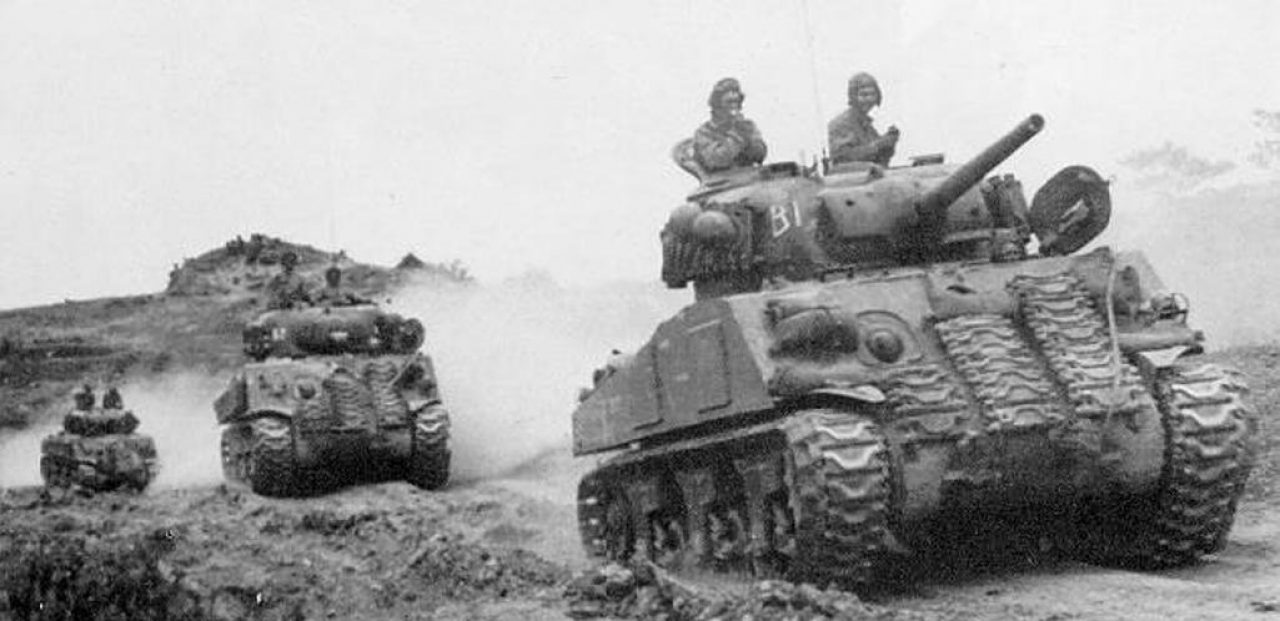Although Little Willie satisfied the requirements set forth by the Landship Committee, there were still improvements to be done. As a result, engineers designed a new tank based on new criteria put by the War Office. The resulting prototype was affectionately called “Big Willie” (shown below).

Big Willie had quite a few differences and improvements from its predecessor, namely it had tracks that ran all the way around the hull, and also had sponsons–half turrets located on the side of the vehicle–carrying a 6-pdr gun, in addition to a rear set of wheels to improve steering capabilities (only slightly though, remember that these things were SLOW), and was capable of carrying 8 men.
Satisfied, the British immediately called for the construction of 100 Mark 1 Tanks (these were production models of Big Willie) which later increased to 150.
In a ratio of 50/50, the Mark I was divided into genders, where the gender of the tank determined its weapon loadout:
- Male tanks were merely copies of Big Willie, armed with a pair of 6-pdr guns and machine guns.
- Designed to spearhead breaches into German lines and destroy emplacements
- Female tanks, on the other hand were armed with heavy machine guns and regular machine guns
- These were designed to support and protect the infantry, who would often use them as cover.
Initial Battle Reports:
The first tank offensive had mixed results. Because the tank was still in its infancy, the tank crews were largely inexperienced and had little training. Several tanks were destroyed outright by enemy shelling.
However, this did not mean that the tank was unsuccessful as a design. There were at least 2 incidents where Mark 1s were successful on the battlefield:
- In 1916 during the Battle of the Somme, 3 Mark 1s were successful in overrunning a German machine gun emplacement, with the German soldiers posted there running in terror at the sight of the armored-metal-boxes-with-guns coming at them.
- Another Mark 1 tank, Crème de Menthe, was successful in supporting a British raid on a German-occupied factory.
Conditions inside of the tanks were extremely harsh, here were the reasons why:
- The inside of the tank was hot
- The crew was constantly choking on exhaust fumes, carbon monoxide, and cordite from weapons fire.
- The armor plating was extremely thin (12mms of armor at maximum), and were riveted rather than welded or cast
- a) The reason why this is harsh is because weapons fire directed at the tank could hit the rivets, dislodging them and causing them to bounce around inside the crew compartment, often injuring or outright killing the crew, a mere bounce could be dangerous.
- b) To combat this, tank crews often wore medieval style chainmail/leather, which was heavy and cumbersome.
- a) The reason why this is harsh is because weapons fire directed at the tank could hit the rivets, dislodging them and causing them to bounce around inside the crew compartment, often injuring or outright killing the crew, a mere bounce could be dangerous.
- There was inadequate ventilation of any of these tanks.
Combining the above conditions, many of these tanks were knocked out or rendered inoperable simply because the crew fainted from the lack of air and extreme heat.
Here is a video lecture by David Fletcher of the Bovington Tank Museum on the Mark 1
Sources used:
http://tanks.net/tank-history/first-tanks-in-battle.html
http://tanks.net/tank-history/the-first-tank.html
http://tanks.net/world-war-one-tanks/mark-i-heavy-tank-big-willie-mother.html


Great topic! I really enjoyed that information and the video. I think that it is crazy how humans are able to create such vehicles of that magnitude for a war.
LikeLike
Necessity is the mother of invention, as the proverb goes.
LikeLike